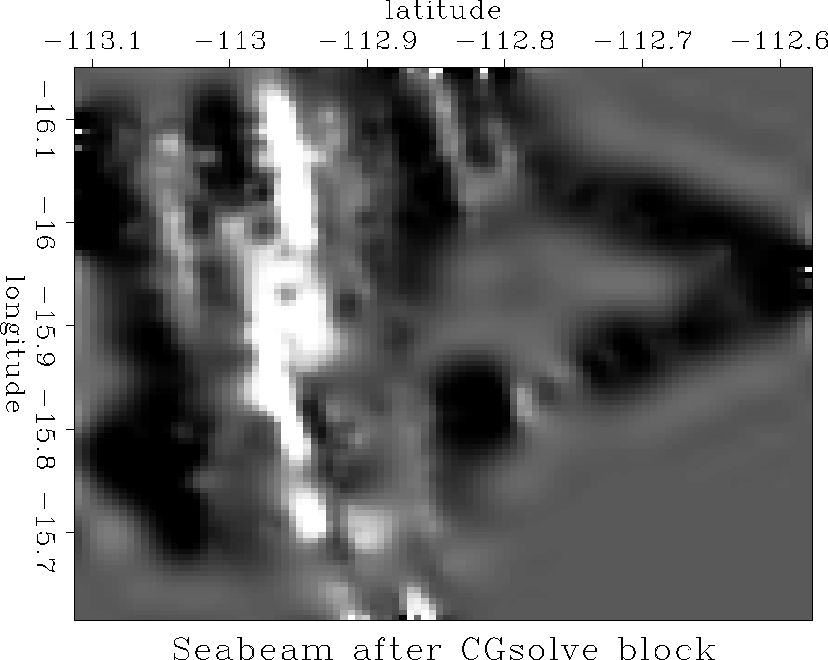In this example, we solve the 2-D inverse linear interpolation problem: given some data values sprinkled on the (x,y) plane, we need to find a function on a uniform mesh from which we can extract the data by linear interpolation. The solution is constrained to minimize the power of a given filter applied to it. The regression
| |
(1) |
The following lines of code show the creation and invocation of a
conjugate gradient solver CGstep solver, which iterates the
regression expressed in equation (1):
#include "CGstepSolver.h"
...
// Create the CG solver
float tol; if(!fetch("Tol","f",&tol)) tol = 1.0e-2;
int niter; if(!fetch("niter","d",&niter)) niter = 50;
CGstep * solver = new CGstep( tol, niter );
// set debug parameter for solver
solver->Parameters().PutValue("Trace", 1);
// Run the CG solver
solver->Solve( N , lhs, x );
// Output result
x.Write();
The code consists of three concise steps: first, the block operator
N, the input x and the output lhs are constructed
(not shown); secondly, the solver is constructed; finally, the
input data is inverted using the solver. The syntax
solver->Parameters() .PutValue("Trace", 1) sets a flag
for the solver to output the convergence rate to stdout.
Figure 4 displays the result obtained after 70
iterations using a Laplacian filter.
The CGstep class is derived from the HCL_LinearSolver abstract base
class. The HCL_LinearSolver class has only one member function,
Solve(). This function takes as its arguments a linear operator,
a vector that is the left hand side of the regression in
equation (1), and a vector that is the solution to the
regression. The CGstep class implements the Solve() member
function as a conjugate gradient algorithm.
|
cgslvbkop
Figure 4 Solution obtained to the seabeam missing data problem after 70 iterations, using a Laplacian filter. |  |